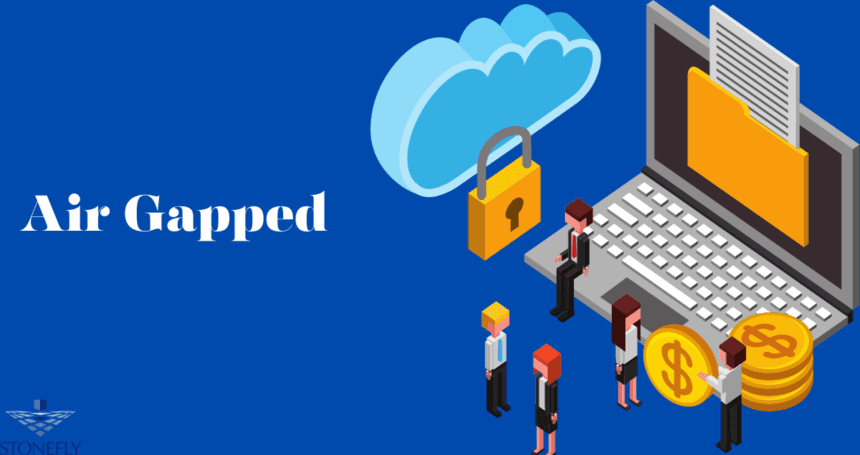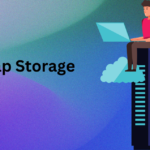Exploring the World of Air Gapped Networks
In an era where connectivity is king, there exists a realm shrouded in digital secrecy, where the air is not filled with Wi-Fi signals or Bluetooth frequencies. This is the domain of air gapped networks— a term that might sound like a piece of jargon from a cybersecurity thriller, but it is a vital concept for businesses and organizations serious about safeguarding their most sensitive information. This blog will dissect the purpose and practices of air gapped networks, their benefits and challenges, and explore where this isolated approach intersects with our hyper-connected future.
Introduction
An Air Gapped network, often simply called an “air gap,” refers to a network that is physically isolated from unsecured networks, effectively creating a secure environment for sensitive data. This isolation is typically achieved by ensuring no network connections are established between the secured system and the outside world, thus preventing remote data exfiltration and unauthorized network access.
Benefits of Air Gapped Networks
Despite the inconveniences that can arise from disconnected systems, the unique benefits of air gapped networks make them indispensable in certain environments.
Enhanced Security Features
The most obvious advantage is the heightened level of security. With no physical or logical connection to the internet, air gapped systems are immune to many of the most common cyber threats, such as malware, phishing attacks, and unauthorized system access. This isolation effectively acts as a barrier against the vast array of digital threats that have become synonymous with the internet.
Protection Against Cyber Threats
With the rise of sophisticated cyber-attacks, such as Stuxnet, which specifically targeted air gapped systems, it is essential to recognize that air gaps are not impenetrable. However, these instances are relatively rare and require a substantial amount of resources and expertise, which typically are beyond the reach of most hackers. For the majority of digital adversaries, air gapped systems are considered “too hard,” and attackers generally seek out more accessible targets.
Data Privacy and Integrity
For highly sensitive data, there is no substitute for an air gapped environment. The isolation ensures that data cannot be accidentally or intentionally leaked, providing absolute privacy and enhancing data integrity. In sectors like healthcare and finance, where compliance with data protection regulations is non-negotiable, air gapped networks are a critical component of the infrastructure.
Challenges of Air Gapped Networks
Air gapped networks are not without limitations. Implementing and maintaining these networks present their own set of challenges that must be carefully managed.
Limitations in Data Transfer
Transferring data in and out of an air gapped system is inherently difficult. While there are manual methods of doing so, such as using physical media like USB drives, these can be slow and error-prone. This can also potentially open up a channel for malware transfer, as evident by attacks like BadUSB, highlighting the need for stringent security protocols around these transfer methods.
Maintenance Complexities
Air gapped systems must be updated regularly to ensure that they remain secure against the latest threats. Software updates, patches, and system maintenance typically require a physical presence, making it a labor-intensive and time-consuming process, especially for larger networks with numerous isolated components.
Potential for Insider Threats
One of the greatest security risks for any system, including air gapped networks, comes from within. Insider threats, whether malicious or accidental, can compromise the security of air gapped systems. This could be through direct physical access to the system or through the misuse of authorized data transfer methods.
Use Cases and Industries
Air gapped networks are particularly prevalent in industries and applications where the consequences of a data breach are especially dire.
Military and Defense
From the earliest computer systems to the most advanced military hardware, air gapped networks have long been a standard practice for classified information. This allows for updated data and intelligence to flow from secure sources to military command centers without the risk of interception or corruption.
Critical Infrastructure
Systems that control critical infrastructure—such as power grids, water supplies, and transportation networks—rely on air gapped networks to maintain their operations securely and without the risk of external influence or sabotage.
Financial Institutions
Banks, investment firms, and other financial institutions deploy air gapped networks to protect the vast amounts of personal and financial data they handle. This security measure is critical in maintaining customer trust and complying with stringent financial regulations.
Future Trends and Technologies
Even in an increasingly connected world, the demand for air gapped networks remains robust. However, the future may bring about a reevaluation of how we approach and integrate this technology.
Integration with IoT and AI
The increasing connectivity of Internet of Things (IoT) devices and the incorporation of AI into business practices are influencing how air gapped networks are designed and used. Organizations need to consider how these technologies can be safely integrated into the air gapped framework without compromising security.
Advancements in Secure Data Transfer Methods
In response to the demand for more efficient Data transfer into and out of air gapped systems, there will likely be advancements in secure data transfer methods. This could include innovations in encryption protocols, biometric authentication, and other technologically advanced solutions that balance security with practicality.
Potential Vulnerabilities to Watch Out For
Cybersecurity is a dynamic domain, and new vulnerabilities can emerge at any time. As we look to the future, organizations must remain vigilant and adapt their security strategies to address potential weaknesses within their air gapped networks, from new types of insider threats to evolving social engineering techniques that could breach the physical security of these systems.
Conclusion
The role of air gapped networks in an interconnected world is an evolving one. There will always be sensitive data that requires the isolation, security, and privacy that air gapped networks provide. By understanding the nuances of this type of secure network, organizations can make informed decisions about when and how to incorporate it into their overall cybersecurity strategy, ensuring that the air gap remains an effective safeguard in the digital age.
FAQs
Q: Can an air gapped system be hacked?
A: While not impossible, hacking into an air gapped network is incredibly difficult and requires significant resources and expertise. For most hackers, the effort required is not worth the potential payoff.
Q: Are air gapped networks completely secure?
A: No system can be considered completely secure, but air gapped networks offer a high level of security. They are not impervious to attacks, but the isolation and stringent protocols make them highly resistant to external threats.
Q: How do you transfer data in and out of an air gapped system?
A: Data can be transferred manually using physical media like USB drives or through specialized tools and software designed for secure data transfer. These methods often utilize encryption and authentication protocols to ensure the integrity of the data being transferred.
Q: Is there a risk of data corruption in air gapped systems?
A: Data corruption is always a possibility in any system, but the isolation of air gapped networks can actually help mitigate this risk.
Q: Are there any alternatives to using air gapped networks?
A: There are alternative methods of protecting sensitive data, such as utilizing strong encryption and access control measures within a connected network. However, air gapped networks remain one of the most secure options for highly sensitive information.



